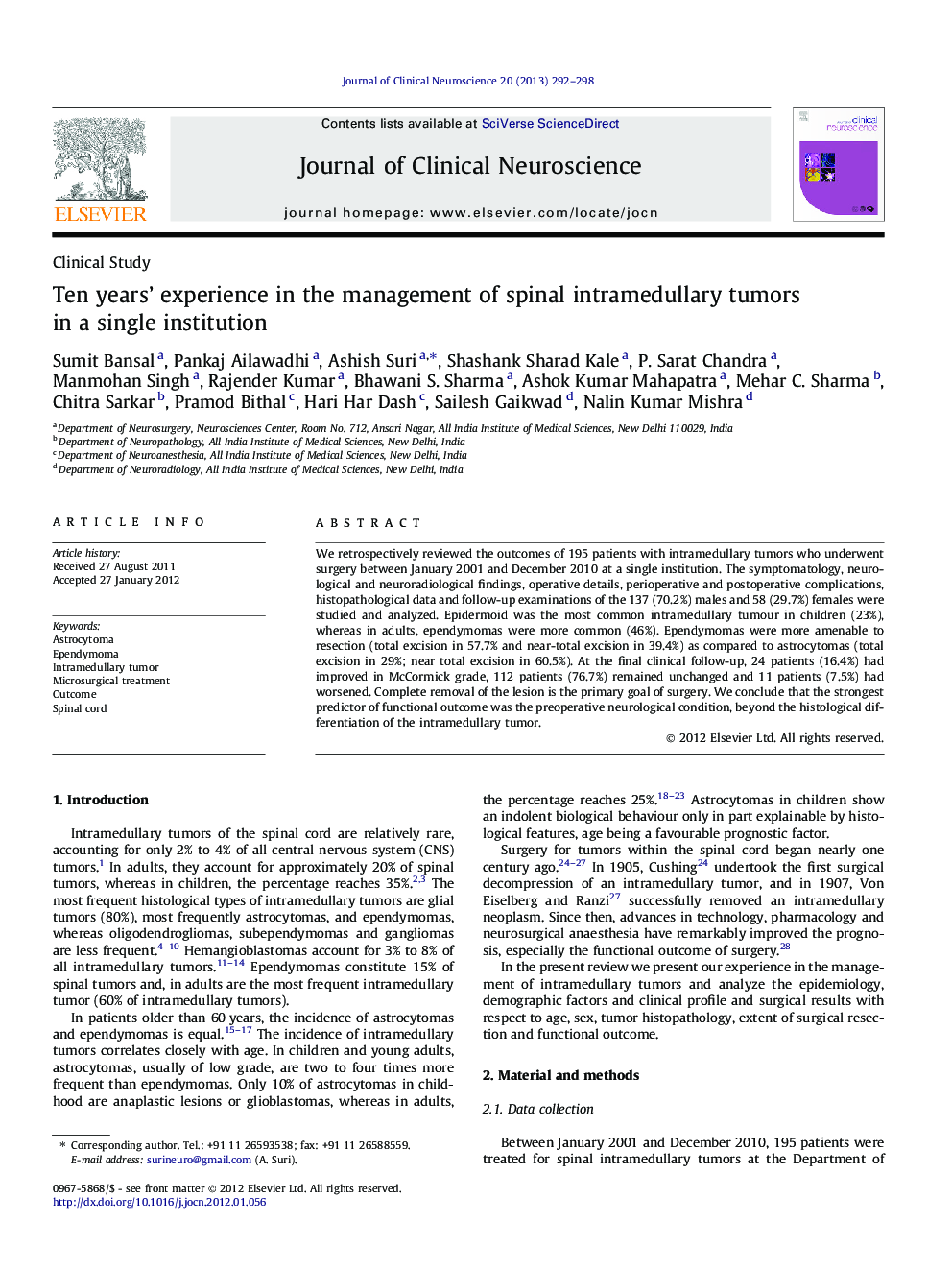| Article ID | Journal | Published Year | Pages | File Type |
|---|---|---|---|---|
| 3060538 | Journal of Clinical Neuroscience | 2013 | 7 Pages |
We retrospectively reviewed the outcomes of 195 patients with intramedullary tumors who underwent surgery between January 2001 and December 2010 at a single institution. The symptomatology, neurological and neuroradiological findings, operative details, perioperative and postoperative complications, histopathological data and follow-up examinations of the 137 (70.2%) males and 58 (29.7%) females were studied and analyzed. Epidermoid was the most common intramedullary tumour in children (23%), whereas in adults, ependymomas were more common (46%). Ependymomas were more amenable to resection (total excision in 57.7% and near-total excision in 39.4%) as compared to astrocytomas (total excision in 29%; near total excision in 60.5%). At the final clinical follow-up, 24 patients (16.4%) had improved in McCormick grade, 112 patients (76.7%) remained unchanged and 11 patients (7.5%) had worsened. Complete removal of the lesion is the primary goal of surgery. We conclude that the strongest predictor of functional outcome was the preoperative neurological condition, beyond the histological differentiation of the intramedullary tumor.
